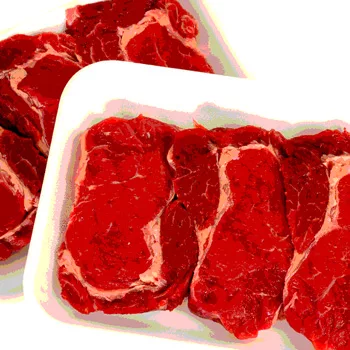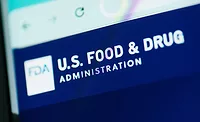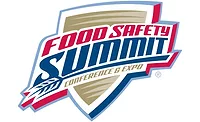Food Safety Focus on Packaging?

The Food Safety Modernization Act (FSMA), coupled with increased media coverage of foodborne illness outbreaks, has contributed to the attention that food safety receives. But the real driver behind this focus on food safety was from consumer packaged goods companies (CPGs) seeking the latest technologies to ensure regulatory compliance and advance their operations.
These measures are not unique to the United States, and the Global Food Safety Initiative (GFSI), established in 2000, recognizes the need for harmonious food safety standards. Most recently, there has been a push by CPGs towards certification of packaging suppliers.
Change is Just around the Corner
At a conference last year, Cass Wade-Kudla, senior manager of packaging at General Mills Inc., Minneapolis, summed up this movement quite well. “If you supply a food company, you are no longer just the packaging industry, you are a part of the food industry,” said Ms. Wade-Kudla. “We treat food packaging with the same food safety rigor as food ingredients.”
Food needs all the protection it can get. According to the Centers for Disease Control and Prevention, Atlanta, foodborne illness affects an estimated 48 million people in the United States every year. Of those, 128,000 are hospitalized and around 3,000 die.
Consequently, FSMA expands the role of the Food and Drug Administration (FDA) in interstate commerce, requiring CPGs to comply with a variety of new procedures, including preventative controls, records and traceability and verification. To help them ensure compliance, processing and packaging suppliers are working directly with their customers to advise on new technology applications and equipment redesign.
Anticipation and the Waiting Game
An open and flexible dialogue with equipment suppliers will be critical to manufacturers in the coming months. CPGs are already challenged by the ongoing delays of formalized regulations. Following the 24-month delay between signing the law and publishing proposed regulations, FDA finally released two of five food safety standards for 120 days of public comment in January 2013.
The first rule requires any registered facilities of food intended for sale in the U.S. (manufacturers, processors and packers) to develop a written food safety plan that identifies hazards and outlines steps to minimize these hazards as well as monitoring procedures and methods for recording results. The plan must also map out steps that will be taken to correct any issues that do arise.
The second rule puts forth enforceable safety standards for the production and harvesting of produce on farms. While small farms (family farms with less than $250,000 annual monetary value of all commodities sold) will have one year to achieve compliance, larger farms will have 26 months. The proposed standards require farms to identify routes for microbial contamination—including water sources, animal health and hygiene, equipment, tools and buildings.
In these still early stages, many CPGs continue to question what new measures will be mandated and concerned about implementing changes that could be incorrect, un-needed and costly in the long run. However, these proposed rules can serve to guide the expectations of food processors and packagers as they look to formulate their own preventative measures. When compliance starts, they will require food safety and food defense plans to include a detailed overview of their Hazard Analysis and Critical Control Points (HACCP) plan. New rules will make it imperative to update directories of supply chain contacts, maintenance and access procedures as well as records should be brought up to date.
To help food manufacturers prepare for full implementation of new regulations, packaging and processing suppliers can also take proactive steps to validate properly functioning machinery. It is critical to ensure equipment is designed and constructed for best sanitation practices. This includes minimizing surface areas that requires cleaning; making sure parts and assemblies are easy to access and inspect; and that cleaning and sanitizing procedures are easily repeated.
The impact of FSMA will stretch beyond U.S. suppliers to U.S. manufacturers. Food and beverage producers that export to the U.S. will also be expected to comply with new food safety regulations.
As the industry awaits the finalization of the new requirements, CPGs and suppliers can look to the Grocery Manufacturers Association website for a facilities checklist of food safety measures. Similar equipment checklists are also offered by the American Meat Institute and the U.S. Department of Agriculture Guidelines for the Sanitary Design and Fabrication of Dairy Processing Equipment.
Packaging under the Microscope
With packaging materials increasingly being sourced from a global marketplace, a harmonious set of standards will help ensure safety. That’s where the GFSI comes in. At one point in time, Good Manufacturing Practices and the occasional audit sufficed in the sourcing of non-edible products that come in contact with foodstuffs, items used in the manufacture, containment, storage and even transportation of foods. This is no longer the case.
The GFSI, managed by The Consumer Goods Forum, a global group of CPGs, recognizes industry audit leaders whose standards and requirements meet the principles of GFSI through a benchmarking process. This includes developing a model that determines equivalency between existing food safety schemes, while providing flexibility and choice in the marketplace. Continuous improvement in food safety is mandated, controlled and updated through this process.
In early 2011, the GFSI created a Packaging Technical Group to review current best practices in relation to the manufacture of food packaging; define and develop the scope of recognition for food safety requirements within packaging manufacturing schemes, review and define the competence of auditors and duration of audits and provide technical recommendations to the GFSI board on issues relating to packaging in the food supply chain.
To date, there are two GFSI-benchmarked schemes for food product packaging—the British Retailer Consortium (BRC) and Safe Quality Food (SQF) —with the Food Safety System Certification (FSSC) 22000 awaiting acceptance. In essence, certification to any GFSI-recognized scheme ensures a company is meeting the highest standards and demonstrating a commitment to producing safe packaging products.
In October 2012, BRC received confirmation of GFSI benchmarking of the BRC/Institute of Packaging Global Standard for Packaging and Packaging Materials. This measure represents the first packaging standard to complete the process of benchmarking by GFSI, providing a focus on packaging that complements the industry’s requirements for facility hygiene.
Soon after, the SQF Code received confirmation of GFSI benchmarking for packaging. The SQF Code is a HACCP?based food safety and quality management system that utilizes the National Advisory Committee on Microbiological Criteria for Food and the Codex Alimentarius Commission HACCP principles and guidelines.
To meet GFSI benchmarking requirements, FSSC 22000, a certification scheme based on the food safety management standard ISO 22000-2005, adopted Publicly Available Specification (PAS) 223, which provides guidelines to implement prerequisite programs and design requirements for manufacturers dealing with the packaging of food products and beverages. PAS 223 sets out practical requirements for the design of food packaging, too. It looks at environment cleanliness, layout and workspace, as well as temporary equipment. It also gives practical requirements to ensure the right air quality and addresses compressed air and gases. Other topics include wastes, waste handling, storage and pest control. The development of this PAS was sponsored by Safe Supply of Affordable Food Everywhere, with a steering group, consisting of leading global packaging and food manufacturing companies.
Taking a Proactive Role
What does all this mean for suppliers to the food industry? Food manufacturers are going to be required to verify to FDA that their suppliers are providing them with safe materials and ingredients. This includes packaging. No longer will a “Letter of Regulatory Compliance” suffice. Packaging suppliers must be proactive and have an understanding of the food safety risks associated with their process and operation.
Jeffrey Barach, Ph.D., Barach Enterprises LLC, is a food scientist who routinely participates in planning, development and management of special projects and programs for the food industry on health and safety issues, production of foods, regulatory inspection and compliance issues and training. He was formerly with Grocery Manufacturers Association as head of their Science Policy Group and previously ran their laboratory in Washington DC. He received his M.Sc. and Ph.D. in food science from North Carolina State University.
Looking for quick answers on food safety topics?
Try Ask FSM, our new smart AI search tool.
Ask FSM →








